
Fiber optic cabling and termination usually cost a lot of time and labor during the deployment of data center. Filed fiber optic termination is still being widely used in many data centers. However, with the data center increasingly depending on the high density cabling, fiber cabling and termination in data center becomes will cost more time and money if using the traditional field termination methods. Meanwhile, the fiber optic network is becoming more and more complex, which makes the data center cabling becomes more difficult. The risks of faults caused manual fiber termination will be increased. To solve problems caused by manual operations and meets the high density requirement of the data center, pre-termianted fiber cable assemblies are introduced in data center.
Deploying a data center by using field termination methods might need a few days or more. Engineers have to termination a lot of fiber optic links and connect them to the right ports. To ensure there are no wrong links and bad fiber optic splicing joints, a lot of checking should be done. However, pre-terminated fiber cable assemblies, using the plug-and-play designed modules and cables, can largely improve the working efficiency, increase cabling density and decrease the total data center installation cost. In addition, the factory terminated fiber cable assemblies eliminate the need of fiber optic splicing and provide higher performance compared with field terminated fiber optic cables.
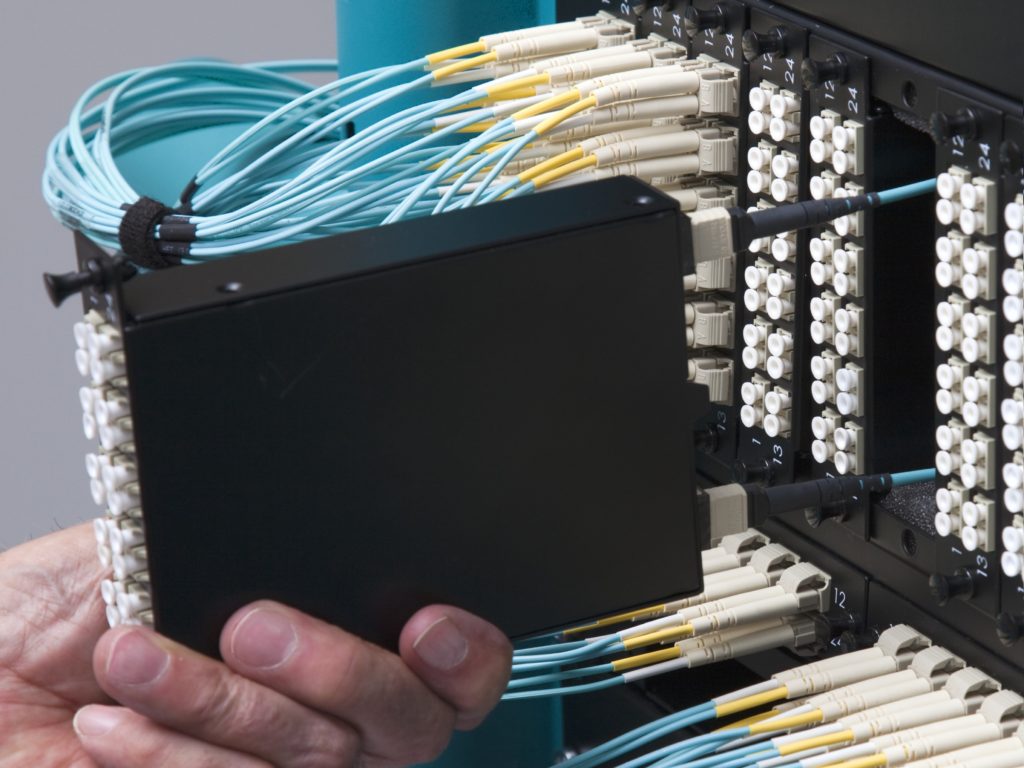
The most commonly used pre-terminated fiber cabling assemblies for 40G/100G high density cabling applications are MTP/MPO fiber cable assemblies including MTP/MPO trunk cable, MTP/MPO harness cable and MTP/MPO cassette. These pre-terminated components can be directly connected to fiber optic network for data transmission. Making good use of these components can largely increase the cabling density and working efficiency in data centers.
MTP/MPO Trunk Cable
MTP/MPO trunk cable is a length of multi-fiber optical cable usually used for backbone transmission in data center. 12-fiber MTP/MPO trunk cable and 24-fiber MTP/MPO trunk cable used for 40G and 100G applications separately.
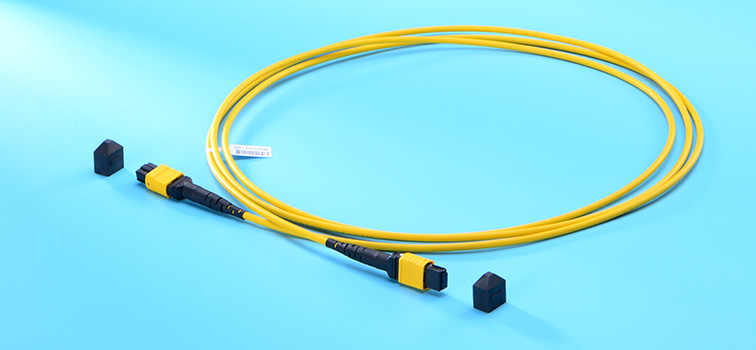
There are generally two versions of MTP/MPO trunk cable—single-strand MTP/MPO trunk cable and multi-strand MTP/MPO trunk cable. A multi-strand MTP/MPO trunk cable combines several single-stand MTP/MPO trunk cables together. For example, a 72-fiber MTP/MPO trunk cable, as shown in the following picture, has 6 strands of 12-fiber cables combining together. Each strand is terminated with a 12-fiber MTP/MPO connector.
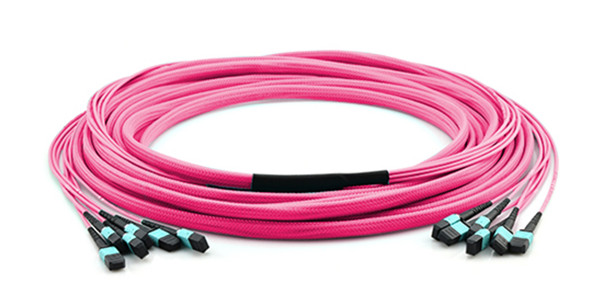
MTP/MPO Harness Cable
MTP/MPO harness cable is a fanout version of MTP/MPO fiber optic cable. A MTP/MPO fiber optic connector is terminated on one end of this cable, the fanout end it terminated several other types of fiber optic connectors which are usually LC fiber connectors. This type of pre-terminated fiber optic cable is generally used for 40G to 10G transmission or 100G to 10G transmission. MTP/MPO harness cables also come into various types, the most commonly used are 12-fiber MTP/MPO to 6 duplex LC harness cable for 40G duplex transmission and 24-fiber MTP/MPO to 12 duplex LC harness cable for 100G duplex transmission.
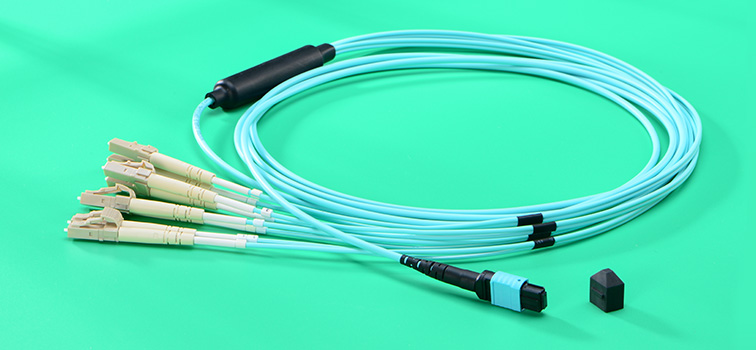
MTP/MPO Cassette
MTP/MPO cassette is a specially designed box which contains one or more small version of MTP harness cables in side it. Generally there is one or more MTP fiber optic interface on the back rear of a MTP/MPO cassette and several LC interfaces on its front rear. It can be easily installed on the rack for easier cabling as shown in the following picture.

In this way, the fiber optic connections are protected in this box and more fiber optic connections can be added to the data center without worrying about space limitation. The most commonly used are MTP/MPO LGX cassettes. However, driven by increasing need for high density, the size of MTP/MPO Cassette is keeping decrease. HD MTP/MPO cassette (shown in the following picture) is also available in the market for higher cabling density.
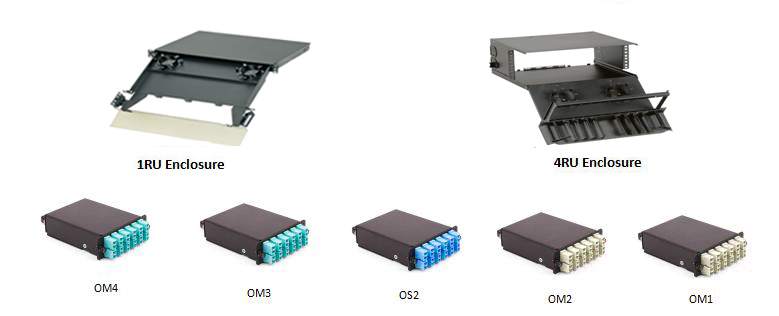
The pre-terminated fiber cable assemblies help to accelerate the data center deployment, reduce costs and error, and provide great flexibility and scalability. MTP/MPO cabling system as one the most popular pre-terminated fiber cabling solutions can perfectly fit the 40G and 100G applications. The above mentions products is just a really small part of the pre-terminated fiber cable assemblies. If you need more details, please visit FS.COM where you can customize the pre-terminated fiber cable assemblies according to your applications.

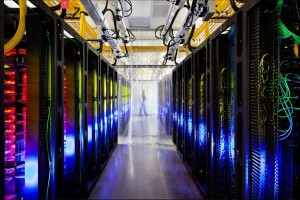 As we know, badly planned or unstructured data center cabling will usually cause more delays both in our daily work and when there is a issue in data center. Though there may be many professional team or engineers that know enough knowledge to manage the cabling in data center, or many companies will hire a network cabling service to help them do better cabling, cabling practices for data center cabling are often useful for everyone who works in a data center. Whether you choose a network cabling service or do it yourself, the following six tips for data center cabling you should know.
As we know, badly planned or unstructured data center cabling will usually cause more delays both in our daily work and when there is a issue in data center. Though there may be many professional team or engineers that know enough knowledge to manage the cabling in data center, or many companies will hire a network cabling service to help them do better cabling, cabling practices for data center cabling are often useful for everyone who works in a data center. Whether you choose a network cabling service or do it yourself, the following six tips for data center cabling you should know.